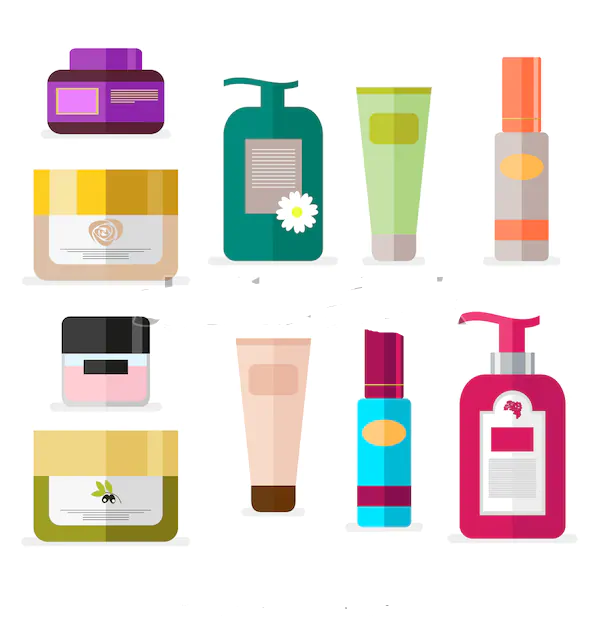Gu Jingsheng/Imaginechina - A Chinese shopper looks at bottles of Johnsons baby products at a supermarket in Beijing, China. On March 12, 2009, a non-profit U.S. organization, Campaign for Safe Cosmetics, issued test results on 48 Johnson & Johnsons baby products, including shampoo and soaps, which showed 23 of which contained potential carcinogens. The report raised safety concerns.
In the past few years I’ve become much more attuned to “clean” living — organic foods, limited sun exposure, filtered water — so when a friend suggested that many of the lotions and potions we apply to our skin are bad for us, I went through my family’s bathroom cabinets and began reading labels. It wasn’t pretty.
According to Jane Houlihan, who directs cosmetics safety research for the Environmental Working Group, a nonprofit research and advocacy organization, cosmetics and other personal care products contain numerous ingredients — such as phthalates, parabens, formaldehye and diethanolamine — that we should be wary of. “What we put on our our skin often ends up inside our body, and so it’s every bit as important as what we eat, drink and breathe when it comes to minimizing exposure to things that aren’t healthy for us,” she explains.
Drugstore shelves are lined with shampoos, deodorants, moisturizers, soaps and makeup that contain potentially harmful ingredients, say consumer advocates. “Research has shown that many conventional personal-care products contain chemicals of concern that can disrupt your hormones, have been linked to cancer, cause allergies or can damage your skin,” explains Stacy Malkan, author of “Not Just a Pretty Face: The Ugly Side of the Beauty Industry.”
She points out that because there are few safety standards for cosmetics in the United States,“companies are basically making their own decisions about what’s safe enough to sell.”
Industry officials contend that the risks of using cosmetics with trace amounts of chemicals are insignificant or nonexistent. The Food and Drug Administration does evaluate some ingredients used in cosmetics and has issued warnings, such as with formaldehyde in some hair straighteners. But the dearth of solid, large-scale studies on the effect of such chemicals at the levels found in conditioner or toothpaste, say, means it’s difficult to know what the risks are. “The fact is, none of us really know for sure,” said Malkan, “because a lot of these chemicals have not been properly assessed for safety.”
As a result, it’s your choice whether to use a fruity body wash, lipstick or after-shave that may contain lead, diethyl phthalate (a hormone disruptor that is widely used in plastics and has been linked to sperm damage and other reproductive problems) or 1,4-Dioxane, a carcinogenic byproduct that has been banned in Europe.
In November, an advocacy group found that Johnson & Johnson was selling baby shampoo in the United States, Canada and several other countries that contained small amounts of quaternium-15, a formaldehyde-releasing preservative that has been linked to cancer, even though the company had removed the chemical from similar products sold in Europe and Japan. (The company has announced that it did not believe the small amounts in its shampoos posed any threat but that it would phase out the use of such ingredients across the globe.)
The worry here isn’t just one chemical in your or your child’s shampoo. Rather, it’s the buildup of potentially dangerous additives from a variety of sources. “The toxic exposures just add up over time,” says Barbara Sattler, director of the Environmental Health Education Center at the University of Maryland School of Nursing. “If you’ve got a set of neurotoxins in two or three or five products you’re using and you’re putting them on your skin and inhaling or ingesting them every day, you’re increasing the risk of an untoward effect,” she explains.
An EWG survey found that, on average, women are slathering and lathering themselves up with a dozen products every day, with men averaging about six.
Sattler says, “that doesn’t mean there’s going to be a problem — there are a lot of other important variables, like whether you’re a smoker or live in an area with pollutants or have a good diet and all of the other things that contribute to health and resilience — but it is a risk factor.”
While skin irritations and other acute reactions to some of the chemicals are possible, the greater concern is longer-term effects such as cancer, fertility problems and neurological issues.
For many people, the small amounts of suspect chemicals found in these products aren’t worrisome. But the “green” sector of the cosmetics industry is booming, and those who want to avoid them have a wealth of options. However, experts say caution is warranted here, too.
“Unfortunately, there’s a lot of ‘greenwashing’ that goes on: pretending that a product is green when it’s really not,” says Malkan, “and since it’s not regulated, relying on marketing claims or labels isn’t your best bet.” She suggests doing some research and figuring out which ingredients you want to avoid — her advocacy group, the Campaign for Safe Cosmetics, maintains an online list of chemicals it says are dangerous
For Safe and healthy non toxic products, visit here



